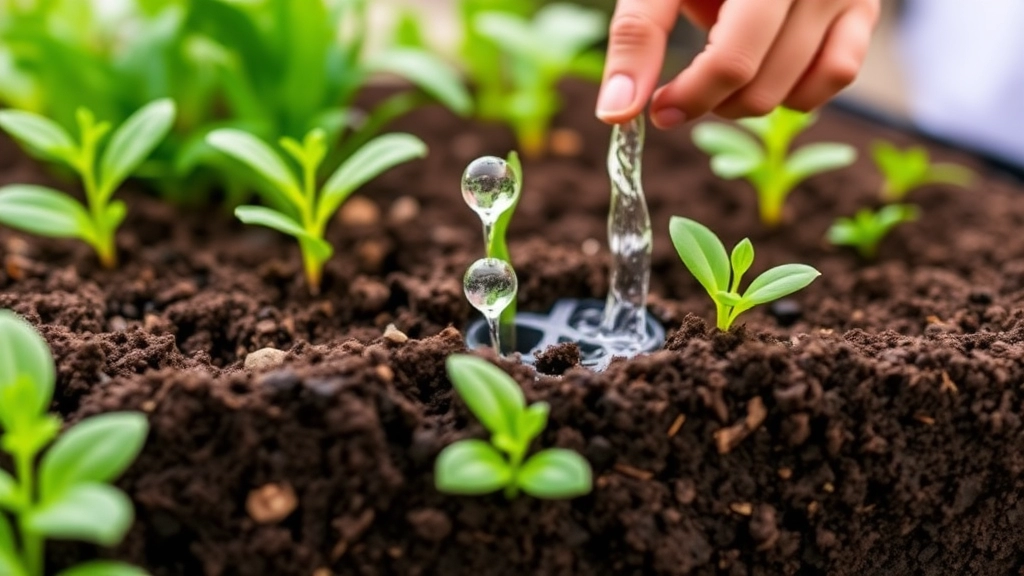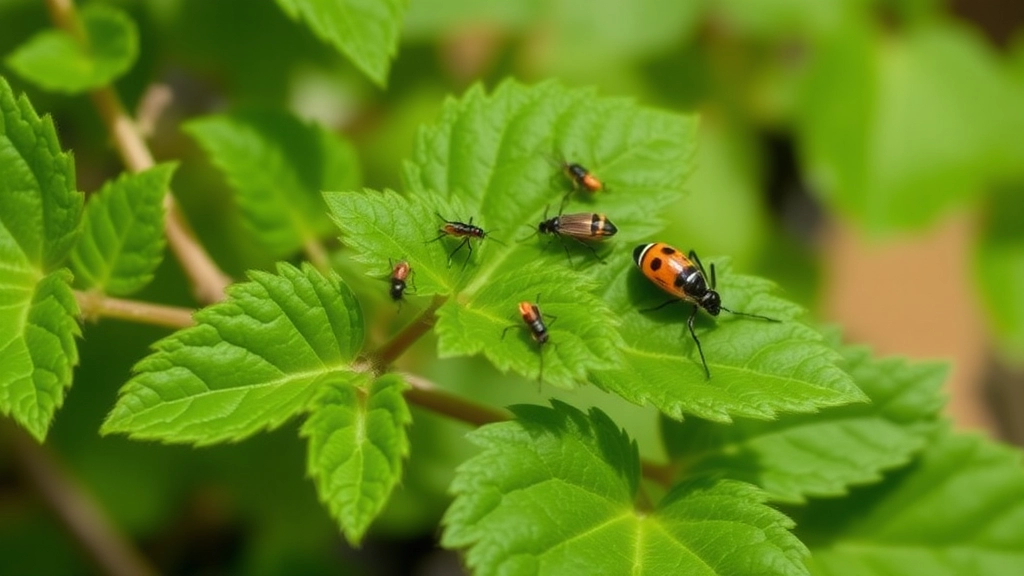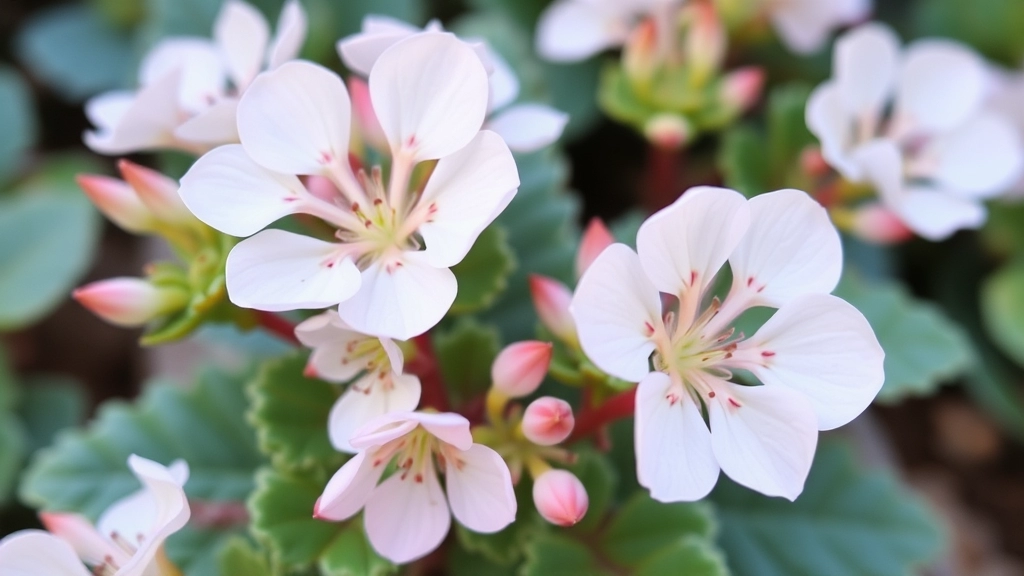Looking to add a touch of elegance to your plant collection?
Kalanchoe Tomentosa White, also known as the Panda Plant, is a stunning succulent that’s easy to care for and perfect for both indoor and outdoor settings. This guide will walk you through everything you need to know about growing and nurturing this unique plant, from optimal sunlight and watering needs to soil preferences and temperature requirements.
Propagation
Propagation is a breeze with Kalanchoe Tomentosa White, whether you’re using leaf or stem cuttings. We’ll also cover common pests and diseases to watch out for, ensuring your Panda Plant thrives.
Ready to dive in?
Let’s explore the best practices for keeping your Kalanchoe Tomentosa White healthy and vibrant.
Are you struggling to keep your Kalanchoe Tomentosa thriving? Many plant lovers face challenges in providing the right conditions for this beautiful succulent.
Kalanchoe Tomentosa, often known as “Panda Plant,” thrives in specific environments that mimic its natural habitat. Understanding these optimal growing conditions is crucial for its success.
### Light Requirements
– **Bright, Indirect Light**: Kalanchoe Tomentosa prefers bright but indirect sunlight. Direct sunlight can scorch its leaves.
– **South or West-Facing Windows**: Positioning your plant near these windows can provide the ideal light conditions.
### Temperature and Humidity
– **Temperature Range**: This succulent flourishes in temperatures between 18°C to 24°C (65°F to 75°F).
– **Avoid Cold Drafts**: Protect your plant from sudden temperature changes and cold drafts, as they can cause stress.
### Soil Conditions
– **Well-Draining Soil**: A cactus or succulent mix is best. This prevents root rot by allowing excess water to escape.
– **Add Perlite or Sand**: Mixing in perlite or coarse sand can enhance drainage, ensuring your plant remains healthy.
For more detailed information on how to care for Kalanchoe Tomentosa, you can refer to this [complete guide](https://planthq.org/how-to-care-for-panda-plant-kalanchoe-tomentosa-a-complete-guide/). Additionally, if you’re interested in propagating this plant, check out the [step-by-step propagation guide](https://planthq.org/kalanchoe-tomentosa-propagation-guide-stepbystep-tips/).
Watering and Soil Requirements

So, you’ve got your Kalanchoe Tomentosa, and now you’re probably wondering how to keep it thriving.
Watering Tips
First off, let’s talk about watering. This succulent doesn’t need a lot of moisture. In fact, overwatering is one of the quickest ways to send it to plant heaven. Here’s how to nail it:
- Frequency: Water every 2-3 weeks in the growing season (spring and summer).
- Check the soil: Stick your finger about an inch into the soil. If it feels dry, it’s time to water.
- Drainage: Make sure the pot has drainage holes. This helps prevent root rot.
I remember when I first got my Kalanchoe; I was so excited I watered it weekly. Big mistake! It’s all about that balance.
Soil Requirements
Now, let’s chat soil. Kalanchoe Tomentosa loves well-draining soil. Here’s what you should look for:
- Cactus or succulent mix: These are specially formulated to keep things airy and dry.
- DIY mix: You can create your own by mixing regular potting soil with sand or perlite. Aim for a 2:1 ratio (soil to sand/perlite).
Using the right soil is key to keeping your plant happy and healthy.
III. Propagating Kalanchoe Tomentosa: Step-by-Step Guide
Are you looking to expand your collection of Kalanchoe Tomentosa? Propagation is a straightforward process that can be both rewarding and enjoyable.
Why Propagate?
Many plant enthusiasts find joy in propagating their plants. Not only does it save money, but it also allows you to share the beauty of Kalanchoe Tomentosa with friends and family.
Step-by-Step Guide to Propagation
- Choose the Right Time
Spring or early summer is the best time for propagation. The plant is in its active growing phase, making it easier to root. - Select Healthy Leaves or Stems
Look for healthy, plump leaves or stems. Avoid any that show signs of disease or damage. - Prepare the Cuttings
Using a clean, sharp knife or scissors, cut a leaf or stem just below a node. This is where roots will form. - Let Cuttings Callous
Place the cuttings in a dry, shaded area for a few days. This allows the cut ends to callous over, reducing the risk of rot when planted. - Choose the Right Soil
Use a well-draining soil mix, ideally a cactus or succulent mix. This ensures that excess moisture drains away, preventing root rot. For more detailed soil recommendations, check out the best soil for Kalanchoe Blossfeldiana care tips. - Plant the Cuttings
Insert the calloused end of the cutting into the soil, burying it about an inch deep. - Water Sparingly
After planting, lightly water the soil. Allow it to dry out completely before watering again. Overwatering is a common mistake. - Provide Optimal Conditions
Place the pot in a warm, bright location but avoid direct sunlight. A south-facing window is ideal. For more on maintaining healthy plants, you might find the optimal care for Kalanchoe Blossfeldiana growth guide helpful. - Monitor Growth
In a few weeks, you should see new growth, indicating that roots are developing. - Transplant When Ready
Once the new plant is established and has several leaves, you can transplant it into a larger pot if desired.
By following these steps, you can successfully propagate Kalanchoe Tomentosa and enjoy the satisfaction of nurturing new plants from your existing ones.
Common Pests and How to Protect Your Plant

As you nurture your Kalanchoe Tomentosa, it’s vital to be aware of potential pests that can threaten its health.
Identifying Common Pests
Kalanchoe Tomentosa, like many houseplants, can attract a few unwelcome visitors. Here are the most common pests to watch out for:
- Mealybugs: These small, white, cotton-like pests often cluster in leaf joints and on the stems.
- Aphids: Tiny green or black insects that suck sap from the plant, leading to stunted growth.
- Spider Mites: These microscopic pests thrive in dry conditions, causing webbing and yellowing leaves.
- Scale Insects: Small, brown, shell-like pests that attach themselves to stems and leaves.
Prevention and Protection Strategies
To keep your Kalanchoe Tomentosa thriving, consider these straightforward strategies:
- Regular Inspection: Check your plant weekly for signs of pests. Early detection is key.
- Maintain Humidity: Spider mites love dry air. Increase humidity around your plant by misting or using a humidity tray.
- Natural Predators: Introduce beneficial insects like ladybugs or lacewings that feed on aphids and mealybugs.
- Neem Oil Treatment: A natural pesticide, neem oil can deter many pests. Mix it with water and spray on affected areas.
- Isolate Affected Plants: If you spot pests, isolate the affected plant to prevent the infestation from spreading.
- Clean Leaves: Wipe down leaves with a damp cloth to remove dust and potential pests.
By implementing these strategies, you can significantly reduce the risk of pest infestations and ensure your Kalanchoe Tomentosa remains healthy.
Tips for Growing Kalanchoe Tomentosa Indoors and Outdoors
As we delve into the nuances of caring for Kalanchoe Tomentosa, it’s essential to consider how different environments can impact its growth. Whether you’re nurturing this succulent indoors or outdoors, understanding its specific needs will ensure a thriving plant.
FAQs about Kalanchoe Tomentosa White
How often should I water my Kalanchoe Tomentosa White?
Watering frequency is crucial for the health of your Kalanchoe Tomentosa White. Water every 2-3 weeks during the growing season (spring and summer). Always check the soil first; if it feels dry about an inch deep, it’s time to water.
What type of soil is best for Kalanchoe Tomentosa White?
Kalanchoe Tomentosa White thrives in well-draining soil. Use a cactus or succulent mix, or create your own by mixing regular potting soil with sand or perlite at a 2:1 ratio.
How can I prevent overwatering my Kalanchoe Tomentosa White?
Overwatering is a common issue. Ensure your pot has drainage holes to prevent water from accumulating at the roots. Always let the soil dry out between waterings.
What are the common pests that affect Kalanchoe Tomentosa White?
Common pests include mealybugs, aphids, spider mites, and scale insects. Regular inspection and maintaining proper humidity levels can help in early detection and prevention.
How can I protect my Kalanchoe Tomentosa White from pests?
Regularly inspect your plant for pests, maintain humidity, and consider natural predators like ladybugs. Neem oil is also an effective natural pesticide. Isolate affected plants and clean leaves regularly to remove dust and potential pests.
Can I make my own soil mix for Kalanchoe Tomentosa White?
Yes, you can create a DIY soil mix by combining regular potting soil with sand or perlite. Aim for a 2:1 ratio (soil to sand/perlite) to ensure proper drainage.
What should I do if I notice pests on my Kalanchoe Tomentosa White?
Isolate the affected plant immediately to prevent the infestation from spreading. Use neem oil mixed with water to spray on the affected areas. Introducing natural predators like ladybugs can also help control pests.
How do I increase humidity around my Kalanchoe Tomentosa White?
Spider mites, a common pest, thrive in dry conditions. Increase humidity by misting the plant or using a humidity tray. This can help deter spider mites and keep your plant healthy.
Why is it important to have drainage holes in the pot?
Drainage holes prevent water from accumulating at the roots, which can lead to root rot. Ensuring proper drainage is essential for the health of your Kalanchoe Tomentosa White.
Can I use regular potting soil for my Kalanchoe Tomentosa White?
Regular potting soil is not ideal as it may retain too much moisture. It’s best to use a cactus or succulent mix or amend regular potting soil with sand or perlite to improve drainage.
References
-
The Spruce – Growing Kalanchoe Tomentosa
-
Gardening Know How – Kalanchoe Tomentosa (Panda Plant)
-
Succulent Plant Care – Kalanchoe Tomentosa (Panda Plant) Care
